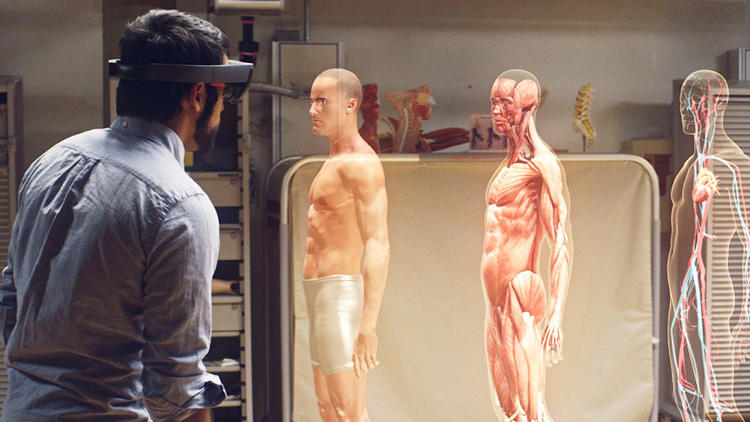The reality computing space is just starting to form and the one product that wants to be the leader in that space is Microsoft’s HoloLens. After unveiling the product earlier this year, Microsoft has, today, given the augmented reality headset a release date and a price, saying that developers can apply online, starting today, to purchase the “HoloLens Development Edition” at a hefty price of $3,000, with an expected ship date in the first quarter of 2016.
Microsoft has not added anything to the headset’s specs, which include 2GB of RAM, an x96 processor, 802.11ac, and a 60Hz refresh rate. This first batch, released in its limited developer edition, is only in preparation for a later consumer release. So, while expert users – like fancy tech firms, movie studios, and gaming companies – will be able to take advantage of the high-priced face computer, novice users will have to wait. Meanwhile, Microsoft is awarding five research teams with two HoloLens units each and a prize of $100,000, with winners to be announced at some point today.
Today, Microsoft showcased the abilities of the HoloLens with a game called Project XRay, which allows users to transform any room into a gaming holodeck. A holographic weapon is outfitted to the player’s arm, with which the player must defend against robots flying and crawling around that room. “Holograms behave just like real objects; they can interact with environments and with each other,” said the Microsoft rep of the demo game, developed in-house.
The implications for 3D printing may seem obvious, with HoloLens wearers able to bring digital objects, crafted while wearing the device, into the physical world with 3D printing or bring physical objects into the digital world with 3D scanning. However, the field of mixed reality, as Microsoft likes to call it, has only just begun. And, with companies like Google and Apple also working in the space, the true implications of augmented reality as it relates to 3D printing are far from perceptible.




